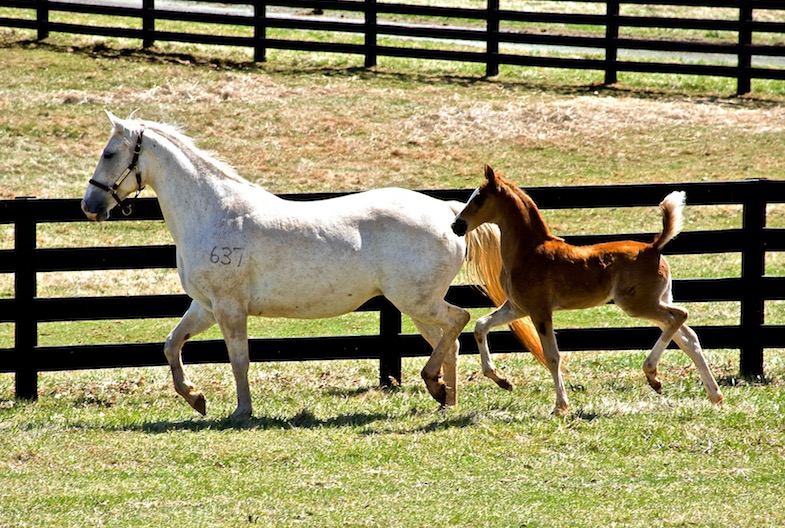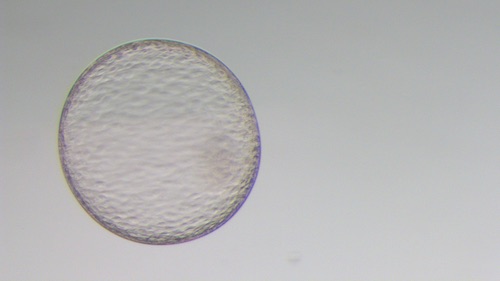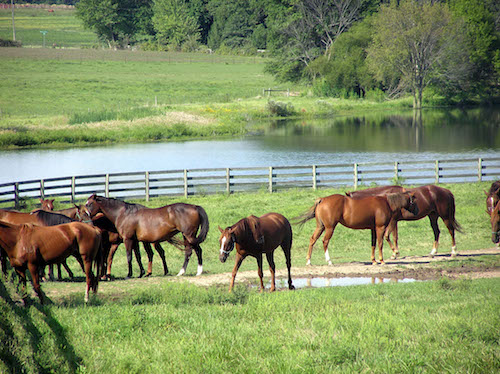 Mares are in foal for about 11 months, which can be an extremely long period of time to be out of commission and out of the show circuit. The solution to this, and to keep your mare competing, while also producing a foal, is through utilizing recipient mares. Reproduction takes place using embryo transfer, oocyte collection Intracytoplasmic Sperm Injection (ICSI); and semen freezing, shipping and storage.
Mares are in foal for about 11 months, which can be an extremely long period of time to be out of commission and out of the show circuit. The solution to this, and to keep your mare competing, while also producing a foal, is through utilizing recipient mares. Reproduction takes place using embryo transfer, oocyte collection Intracytoplasmic Sperm Injection (ICSI); and semen freezing, shipping and storage.
It takes time, and isn’t always perfect, but the odds of having a successful, healthy foal (or more, should you choose to go that route with the veterinarians specializing in reproduction), are greater than they would be through a mare and stallion reproducing on their own without the assistance of advanced science.
Before embarking on the journey of equine reproduction, there are a few things of which to be aware.
Dr. Kristen Loncar of Equine Medical Services in Columbia, Mo., suggests checking first to see what veterinarians near you work on equine reproduction. If you’re bringing the mare that you want to breed to the veterinarian, the veterinarian’s proximity will be something to consider. If the veterinarian is not close by, transportation is an added cost, and depending on how good a traveler the mare is, can also be stressful for the mare. It’s important to look into the program’s success rates and to compare it with other programs, she said, and the cost of the program should also be considered.
 At Equine Medical Services, the fee structure covers as many embryo cycle and transfers as wanted, making it more advantageous if you are planning on multiple foals. For someone who just wants one foal, it might make sense to utilize a program with a different fee structure.
At Equine Medical Services, the fee structure covers as many embryo cycle and transfers as wanted, making it more advantageous if you are planning on multiple foals. For someone who just wants one foal, it might make sense to utilize a program with a different fee structure.
The process of equine surrogacy is not a guarantee, but the odds of a healthy, live foal are higher than if left to nature.
“There’s a lot of science and a little bit of luck,” Dr. Loncar said. “We try to use our science to overcome the luck. If horses are turned out in a field and left to their own devices, it’s something like 60 percent will conceive each cycle”
With veterinary intervention, 60 to 70 percent of the time, she said, they’re able to acquire an embryo, and then there is an approximately 80 percent chance of getting a healthy, full-grown foal.
“Each step of the way, you get a little decrease in success,” she said.
Over the last few decades, the science behind surrogacy has advanced and increased its success rate. Surrogacy is widely used in the cattle industry, Rood & Riddle Equine Hospital’s Dr. Etta Bradecamp said, explaining that early research was done in cattle, then moved to the equine industry.
“There was better research and they became more prevalent in the 1980s,” she said.
Some of the research has moved parallel between bovine and equine, with some of the science more evolved and developed with bovine. Surrogacy is used widely in cattle for show cattle as well as purebred cattle for the dairy or beef industry, and the technology is being used with smaller animals, as well, for purebred dogs, cats and exotics and endangered species.
“When you get to the highest level and breeding animals, top of the line in species and breed,” Dr. Bradecamp said, “people are willing to go to advanced procedures to achieve offspring out of these valuable animals.”
As each year passes, more is learned about the technology behind equine surrogacy.
 There are many reasons people choose to breed their horses, Dr. Loncar explained. Breeding through surrogacy began in the equine industry as a means to expand the lifespan of broodmares who are more at risk with pregnancy as they age and more at risk of injuries or arthritis. Because equine gestation is 11 months, and actively showing mares are unable to take a year off, surrogacy allows for multiple pregnancies from the mare in a given year, while the mare is able to continue with her show career.
There are many reasons people choose to breed their horses, Dr. Loncar explained. Breeding through surrogacy began in the equine industry as a means to expand the lifespan of broodmares who are more at risk with pregnancy as they age and more at risk of injuries or arthritis. Because equine gestation is 11 months, and actively showing mares are unable to take a year off, surrogacy allows for multiple pregnancies from the mare in a given year, while the mare is able to continue with her show career.
By using recipient mares, it is possible to have multiple foals from different stallions and the same mare at the same time, Dr. Bradecamp said.



